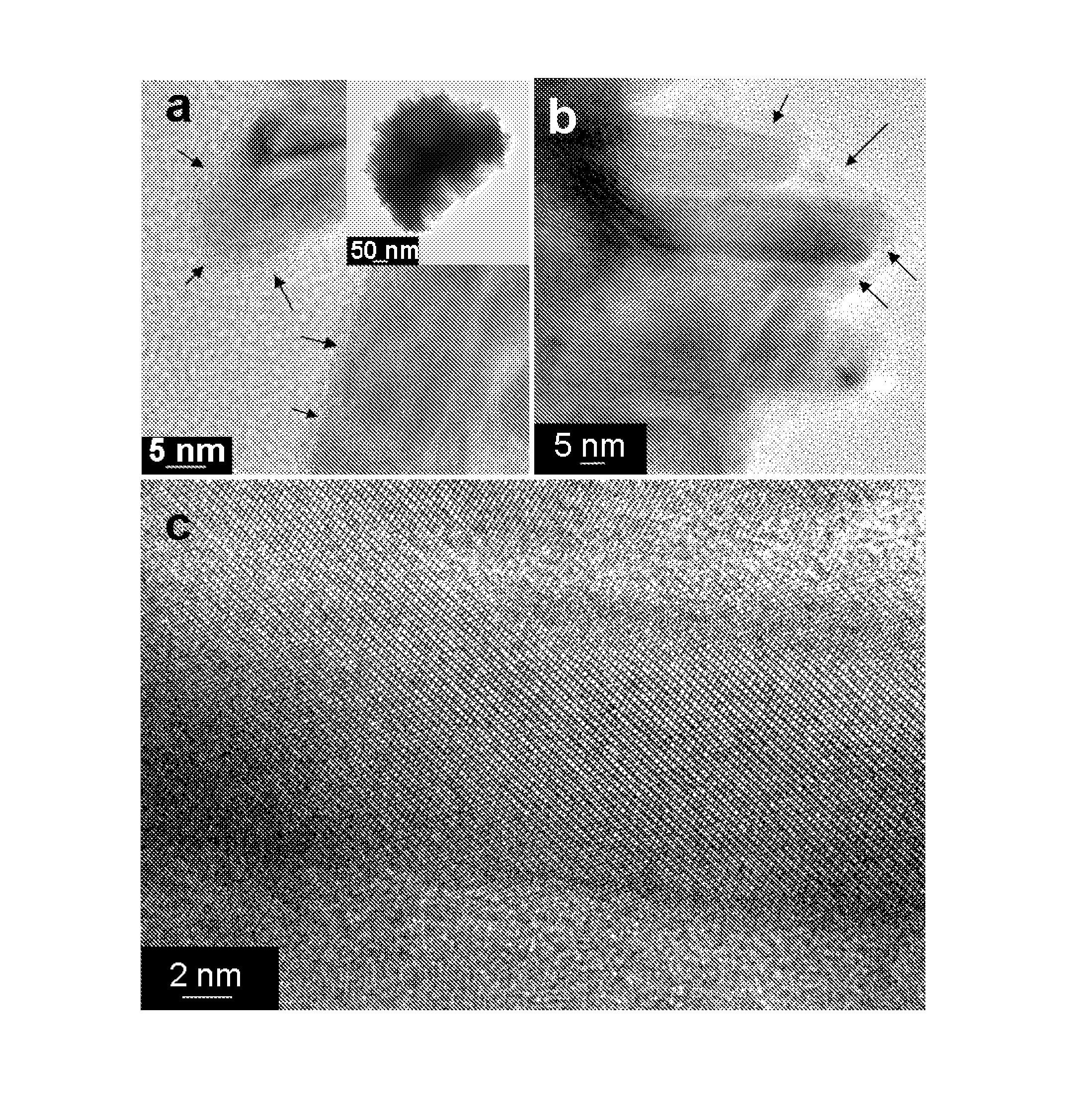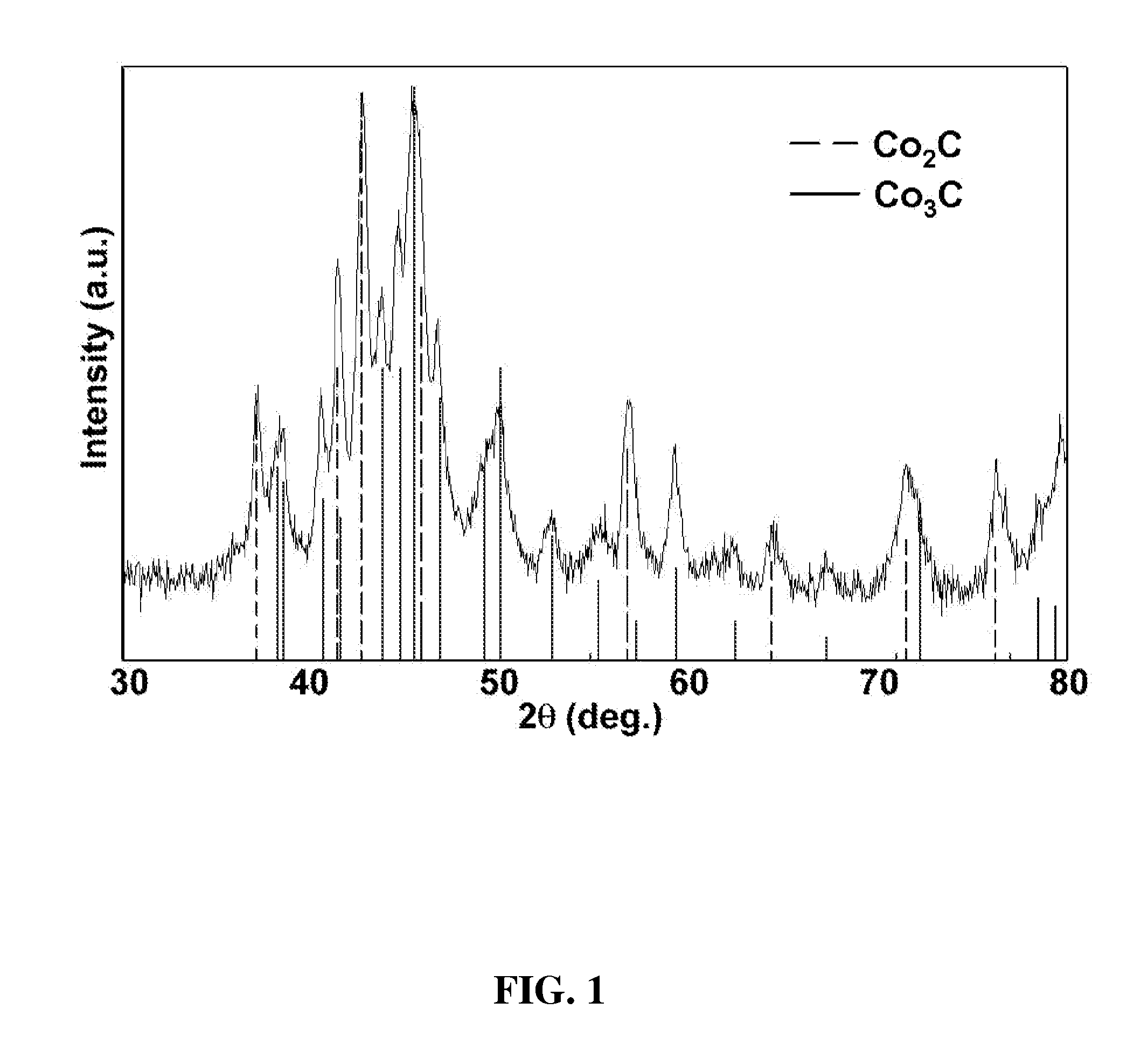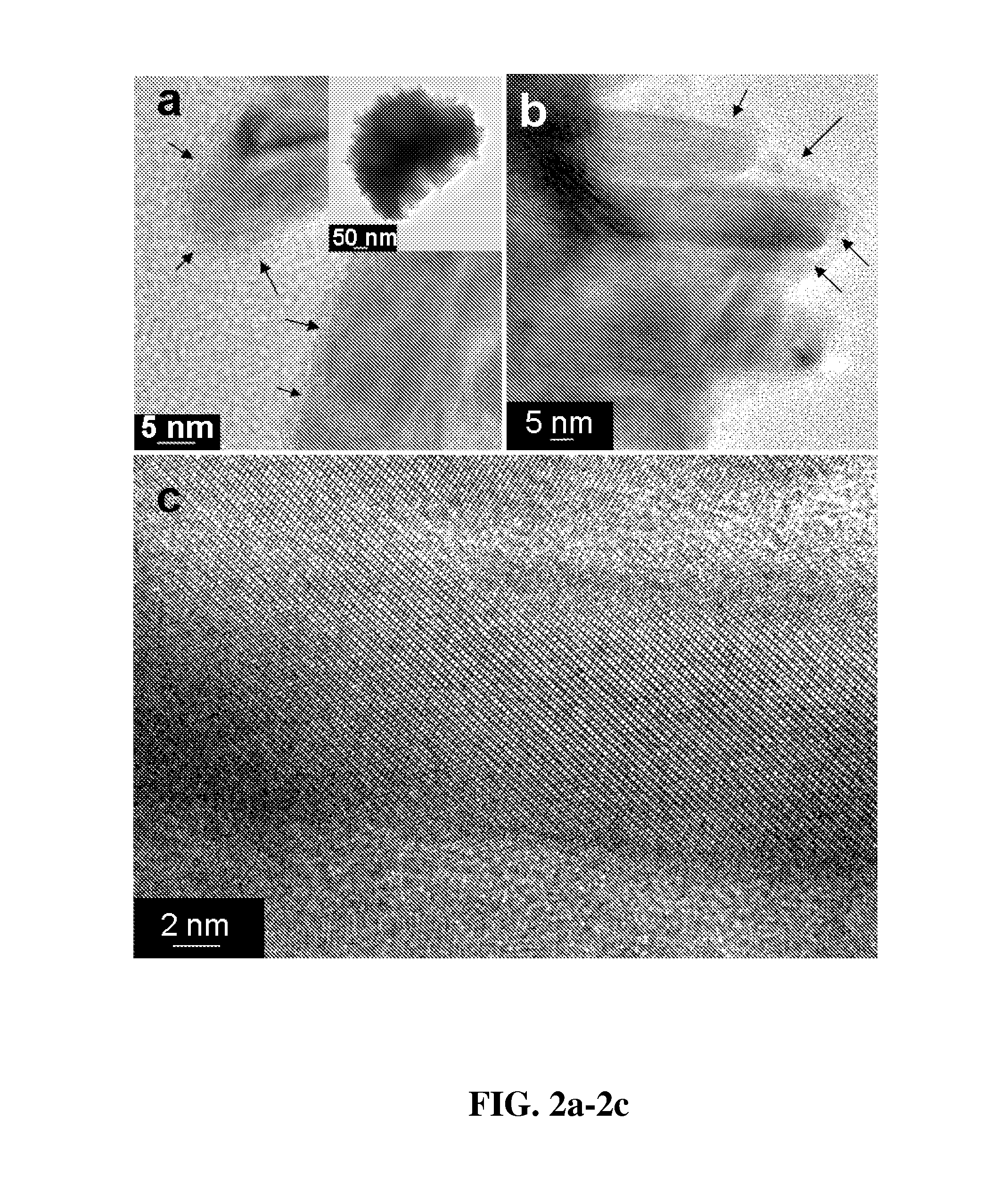Cobalt carbide-based nanoparticle permanent magnet materials
a technology of permanent magnet materials and cobalt carbide, which is applied in the direction of magnetic bodies, magnetic paints, transportation and packaging, etc., can solve the problems of high cost and corrosion, fewer additional developments in viable permanent magnet materials, and high cost and supply chain challenges for commercial industries. , to achieve the effect of high magnetic moment, low coercivity, and high energy produ
- Summary
- Abstract
- Description
- Claims
- Application Information
AI Technical Summary
Benefits of technology
Problems solved by technology
Method used
Image
Examples
Embodiment Construction
[0020]The chemical synthesis methods employed herein to produce size-, shape-, composition- and phase-controlled, highly-coercive cobalt carbide nanoparticles according to the invention are based upon reduction of metallic salts in a liquid polyol medium that acts as both a solvent and a reducing agent. The reduction reaction kinetics of the process are enhanced by controlling the type, temperature, and concentration of the polyol medium and by adding appropriate surfactants that limit the re-oxidation of the reduced ions and regulate the growth of particles as the reaction progresses. The reaction takes place in the presence of a rare earth lanthanide series moiety such as SmII as described herein.
[0021]In general, for the preferred embodiment crystalline CoxC nanoparticles according to the invention, the chemical synthesis method of the invention begins with the addition of a solution of a Co (II) salt (such as acetate, nitrate, chloride, bromide, citrate, and sulfate, among other...
PUM
| Property | Measurement | Unit |
|---|---|---|
| Auxiliary magnetic field | aaaaa | aaaaa |
| Temperature | aaaaa | aaaaa |
| Metallic bond | aaaaa | aaaaa |
Abstract
Description
Claims
Application Information
 Login to View More
Login to View More - R&D
- Intellectual Property
- Life Sciences
- Materials
- Tech Scout
- Unparalleled Data Quality
- Higher Quality Content
- 60% Fewer Hallucinations
Browse by: Latest US Patents, China's latest patents, Technical Efficacy Thesaurus, Application Domain, Technology Topic, Popular Technical Reports.
© 2025 PatSnap. All rights reserved.Legal|Privacy policy|Modern Slavery Act Transparency Statement|Sitemap|About US| Contact US: help@patsnap.com



